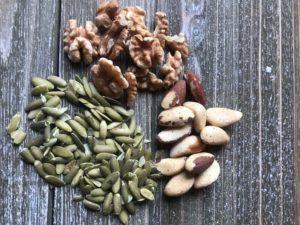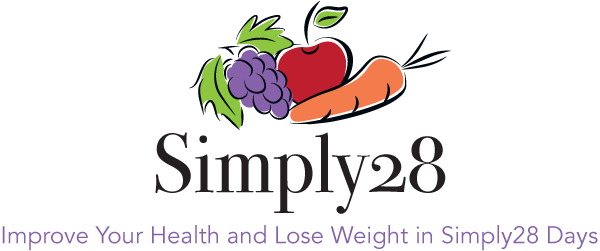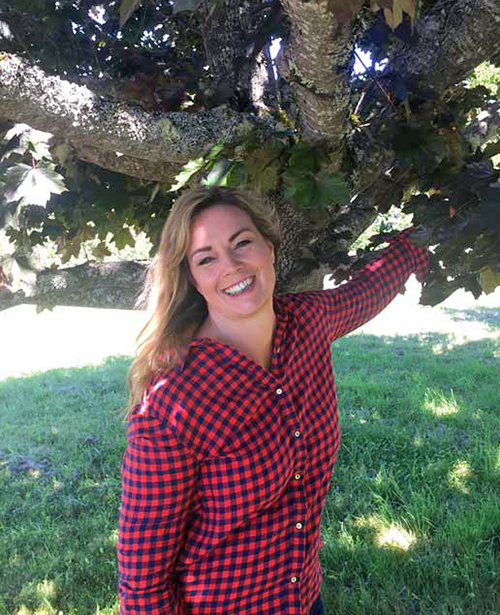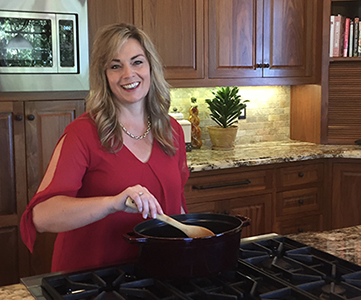The what to wear dilemma … Which pants to wear that will still be comfortable when you sit down and your muffin top protrudes? Which top to wear that will be loose enough and long enough to hide my love handles? Having an extra layer of fat around your middle can be frustrating, embarrassing, and physically uncomfortable. However, having a muffin top affects more than just your emotional well-being and your wardrobe choices.
Having a muffin top, or an extra layer around your waistline means you also have an extra layer of fat around your internal organs as well. Fat around the middle, known as visceral fat is very different from the fat on your thighs, hips and arms. It is fat deep within your body that surrounds your liver, heart, and other organs. Visceral fat is dangerous for your health and can lead to cardiovascular disease, inflammation, some types of cancer, and type 2 diabetes.
All the sit ups in the world won’t help you get rid of your muffin top or your visceral fat. Core exercises will definitely help tone the muscles but an appropriate diet focused on incorporating nutrient dense foods and reducing or eliminating foods that cause bloat, weight gain and water retention are essential.
To learn more about what foods to eat to reduce bloat and weight gain and help you
create a healthy, vibrant body you love download a FREE copy of
Your Quick Start Guide To Healthy Eating
But Aren’t Grains Healthy?
Grains and particularly processed grains such as white flour or instant oatmeal impact our health negatively in several ways. They encourage water retention, raise our glucose and insulin levels, contribute to intestinal permeability, auto-immune conditions and chronic bowel diseases, and they bind with minerals in our food interrupting them from being absorbed through our intestinal walls and utilized by the body.
Prior to the invention of agriculture, our hunter-gatherer ancestors ate few grains. Whether they were edible or not, think about how inefficient they would be. You’d have to gather a lot of very tiny seeds that were in their raw state typically bitter and hard to chew. They would need to be soaked, fermented or slow cooked to make them edible and then would require additional ingredients to make them taste good like sugar or sweeteners. On the other hand, gathering root vegetables from underground, picking berries and fresh fruit, gathering leafy greens or even hunting for meat would be a much more energy efficient form of food and these foods take less work to make them digestible and taste good.
While grains do contain a variety of vitamins and minerals, grains are not essential to a healthy diet. These nutrients can be found in plenty of other whole food sources and are more bioavailable to the human body. In addition, the modern and mechanical processes of agriculture including harvesting, food storage, spraying with pesticides to protect from pests, and genetic modification to make them fast growing and able to resist bugs and disease, actually makes many grains more harmful than good.
Many studies proclaim the health benefits of eating whole grains but the problem with these studies is that they compare diets that are high in whole grains verses diets that are high in processed grains which also tend to be high in sugar as well. This comparison shows an improvement in health over a processed grain diet however they do not show that eating a whole grain diet is healthy. Almost any food is healthier than refined carbohydrates from processes grains and sugars.

What About Nuts and Seeds?
Many seeds are often referred to as grains, but in fact they are very different from a botanical and a nutritional standpoint. For example, quinoa is often referred to as a grain but it is actually a member of the spinach, chard and beet family. Quinoa is more easily digestible and less damaging to the gut than many grains. Rice is also referred to as a grain but is actually the seed of a type of grass and again is easier to digest provided severe chronic intestinal disease isn’t a factor. From a nutritional standpoint, seeds are easier to digest and have more bio-available nutrition than grains do.
Grains, seeds and nuts contain toxins in their outer coat that protects them from being eaten and digested. This makes them bitter so that grazing animals avoid eating to many of them and since they are not easily digestible, the grains are eaten pass through the animal and are spread to different areas where they can germinate and grow. These toxins are unhealthy for humans but removing the outer shell of certain nuts and seeds improves their digestibility.
There is debate over whether or not nuts and seeds are healthier than grains and much conflicting evidence. From my standpoint and my own experience with gut issues and malabsorption, I believe that nuts and seeds are healthier than grains? In addition, our hunter-gatherer ancestors would have been more likely to gather and eat almonds, walnuts and pecans than they would have been gathering the tiny seeds from grasses.
Most people who suffer from gut issues are able to eat a small number of nuts, about a handful per day, without issue. But as always, if you are sensitive to any type of nut or seed it should be avoided.
Reducing Muffin Top and Other Benefits of Eliminating Grains
Reduces Water Retention – The primary source of energy found in grains is carbohydrates (glucose). Each gram of carbohydrate holds on to 3 to 4 grams of water. Reducing grains and other complex carbohydrates allows the body to release the excess water particularly in the waist and around our organs that contributes to those love handles.
Grains Provide Bulk – Grains provide bulk that can bulk up your meal but can also bulk up your waist line after eating. This is temporary and will pass as food as digested but if you want to avoid a little extra bulk around the middle, eliminating or cutting back on grains will help.
Reduces Cravings – Wheat contains a source of natural opioids that stimulate appetite and triggers the pleasure center of our brains. This stimulation makes us feel good in the moment but also leaves us soon wanting more whether we are physically hungry or not.
Reduces Blood Sugar – Blood sugar levels often return to normal levels when on a grain free diet. Insulin dependent type 2 diabetics and others who take blood sugar lowering medications such as Metformin or insulin often need to have their dosages reduced so that their blood sugar levels don’t drop too low when they convert to a grain free.
Supports Weight Loss – Eliminating wheat helps to lose cravings for more wheat and more sugar which aids in the balance of hunger hormones including ghrelin which is released by the stomach when it is empty signaling your brain that it is time to eat and leptin, a hormone released by our fat cells that tells the brain that you have enough fuel and can start burning fat. A reduction in cravings and balance of hunger hormones aids with weight loss and maintaining a healthy weight.
Reduces Inflammation –Avoiding grains and wheat in particular reduces an overactive insulin response that can lead to insulin sensitivity, diabetes, and an accumulation of visceral fat around our internal organs. A buildup of visceral fat can lead to heart disease and activates proinflammatory macrophages, a type of white blood cell of the immune system. One normal function of macrophages is to create inflammation around the damaged tissue to protect it. Once the tissue is healed the inflammation goes down. However, chronic inflammation occurs, as a result of insulin levels remaining high and visceral fats accumulating.
Reduces Mineral Deficiencies – Avoiding grains increases absorptions of minerals including magnesium, calcium, iron and zinc as wheat binds with these minerals and carries them out of the body through elimination preventing them from being metabolized.
Heals the Gut – Avoiding wheat reduces zonulin levels, a protein that is activated by gluten and triggers the normally tight junctions of the intestines to open allowing larger particles to pass through into the blood stream including undigested food particles and bacteria. Opening of these junctions is known as intestinal permeability or leaky gut and may result in immune deficiency and autoimmune conditions.
The 90/10 Rule – Unless you have celiac, allergies to wheat or grains, a sensitivity to gluten or an auto-immune disease, you may be able to enjoy grains and wheat products on occasion. Use the 90/10 rule meaning that if you eat a REAL food diet free from grains and highly processed junk food 90% of the time, you can safely enjoy a few occasional meals that include these foods without sacrificing your health.
Perhaps the most important thing to keep in mind is that no matter what is going on in your body right now, you have the ability to take charge of your health and self-heal with the right tools including eating nutrient dense diet, making lifestyle choices that support your wellness goals, and avoiding foods that do more harm than good.
To learn more you can download the Your Quick Start Guide To Healthy Eating a FREE resource I created to help you know and understand what foods you need to optimize your health AND it comes with a complete Shopping Guide to help you choose from a variety of foods.





